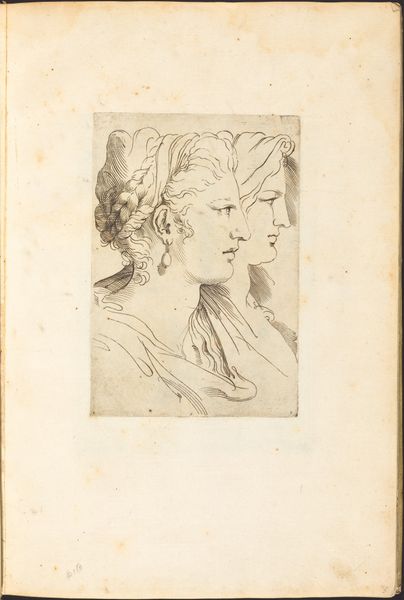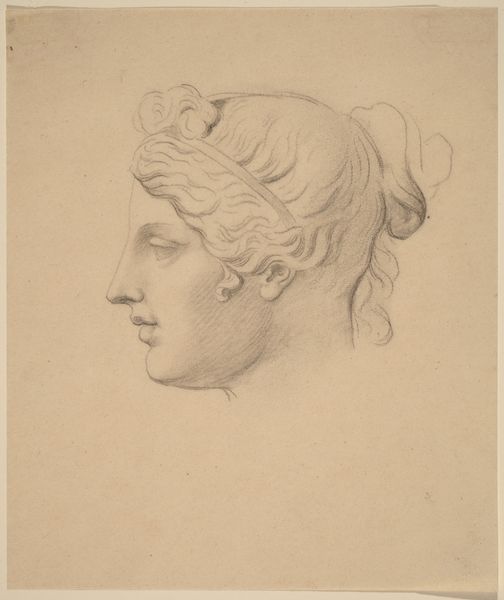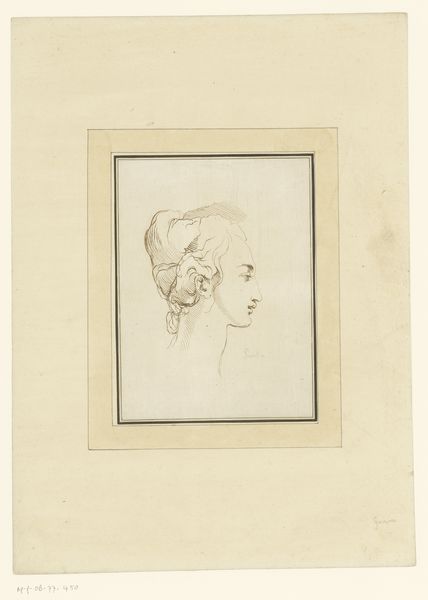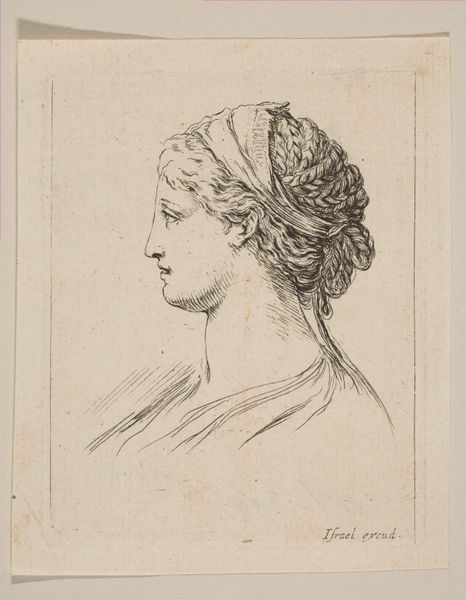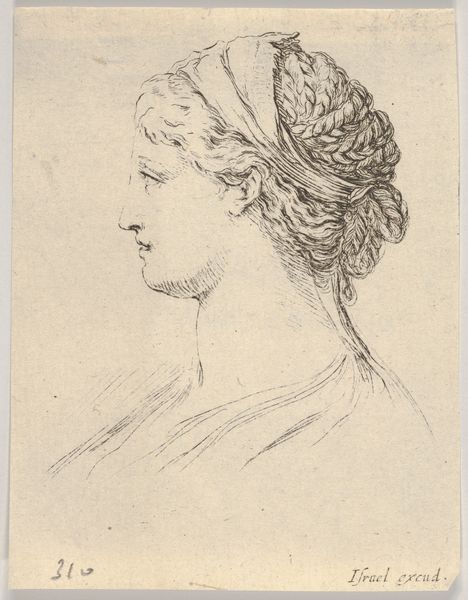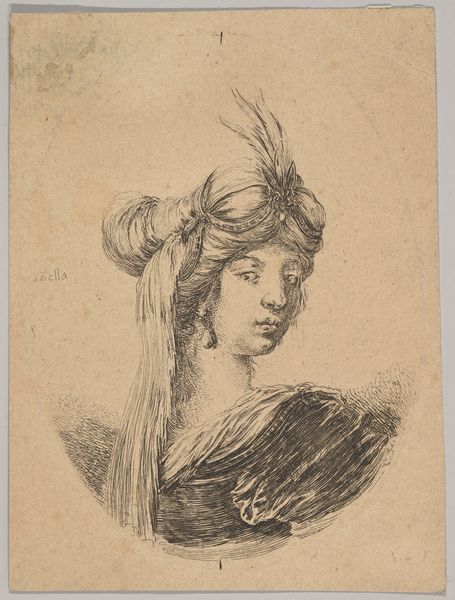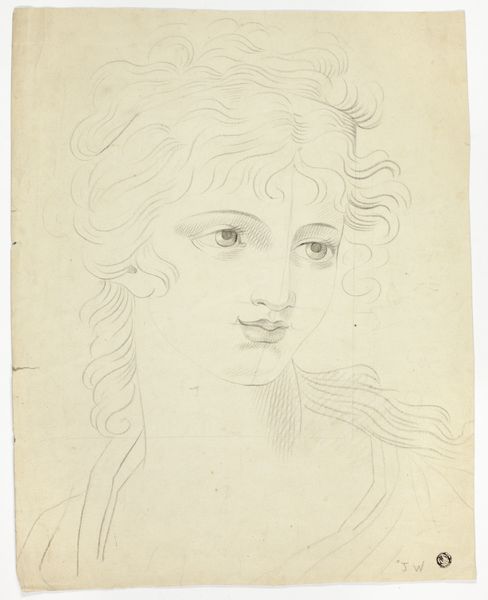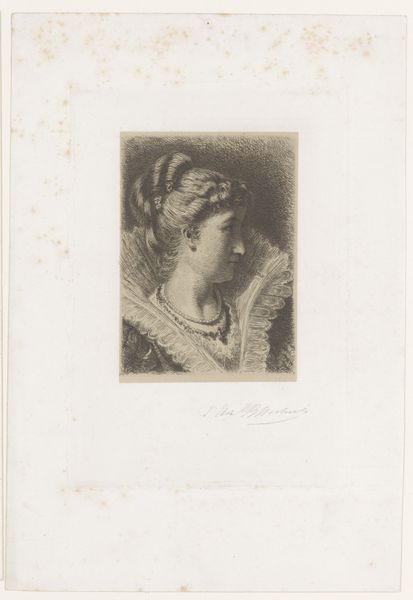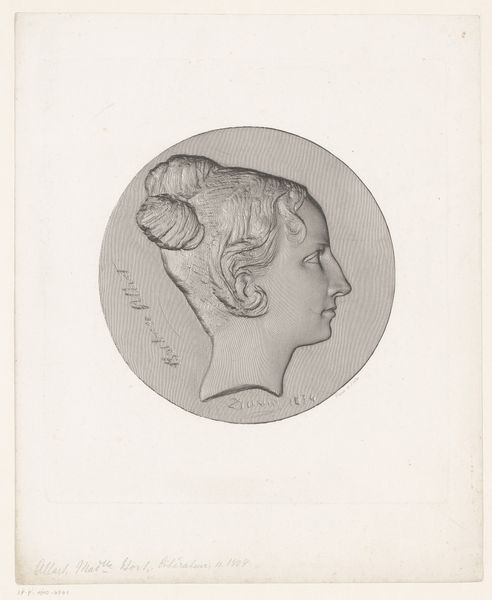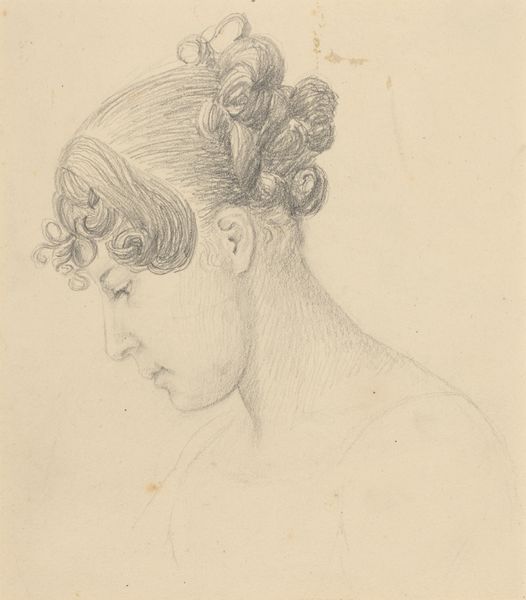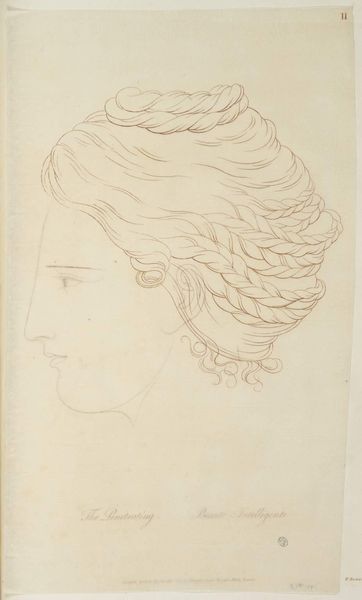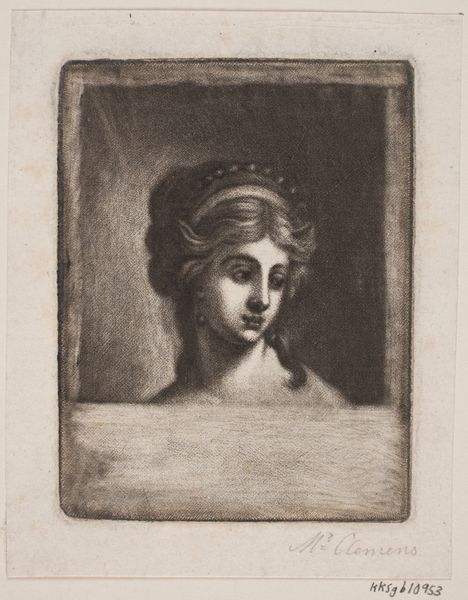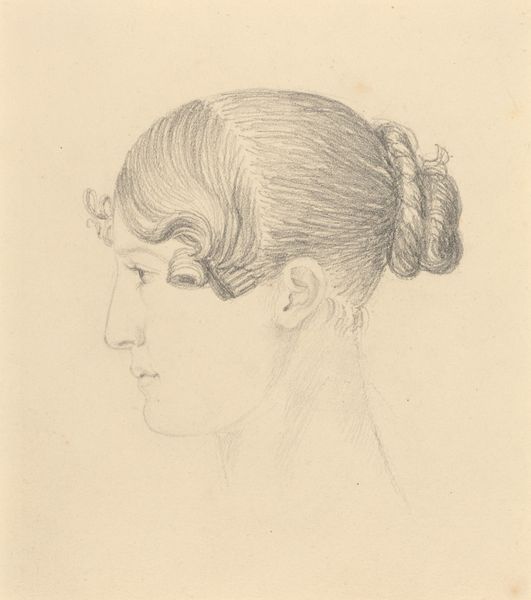
drawing, print, etching, engraving
#
portrait
#
drawing
# print
#
etching
#
11_renaissance
#
history-painting
#
italian-renaissance
#
engraving
Copyright: National Gallery of Art: CC0 1.0
Editor: We're looking at a print called "Print from Drawing Book" by Luca Ciamberlano, made around 1610 to 1620. It looks like an etching, very delicate. The profile of a woman stands out, but what really grabs me is her elaborate hairstyle – almost architectural. What catches your eye in this work? Curator: Oh, her hair is EVERYTHING, isn't it? It’s as though she's sculpted her own monument, brick by painstakingly placed brick of braided glory! But more than that, I see Ciamberlano flirting with a kind of ideal beauty, pulled right out of classical antiquity and reworked for the Renaissance eye. Do you see how that severe profile practically screams "Roman coin"? Editor: Definitely! The sharpness of the features, especially the nose and forehead, is striking. I wonder, why create prints from drawings? Was it a way to disseminate artistic ideas? Curator: Precisely! Think of prints like these as the Instagram of the 17th century – a way to spread artistic trends, copy poses, and basically build a shared visual vocabulary. Suddenly, some nobody from Bologna can crib hairstyle ideas from the Roman elite – it’s democratisation through drypoint! Also, what does the bareness of the setting around her conjure up? Editor: An emphasis on the individual, maybe? Almost a spotlight effect? Curator: Exactly. In distilling it all down like that, he encourages a kind of focus… like holding a single perfect flower. It invites our gaze. It seems to me like with this drawing we're watching someone think – through line. Editor: So, beyond the beautiful hairstyle, it’s really about accessing and sharing ideas… it changes my perspective on portraiture completely! Curator: Mine too! Each viewing has led to greater depths than previously discovered. And for that alone I shall forever cherish this portrait!
Comments
No comments
Be the first to comment and join the conversation on the ultimate creative platform.

